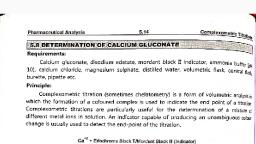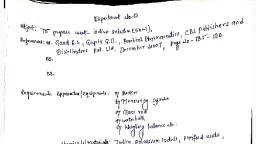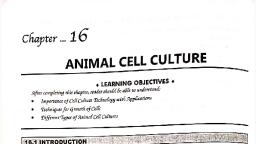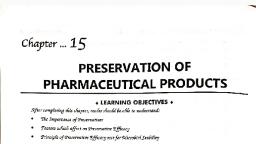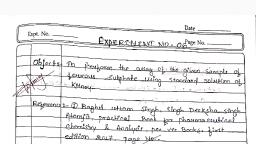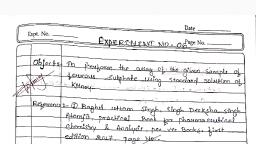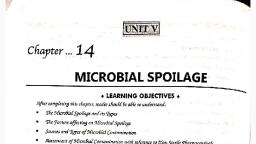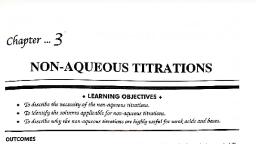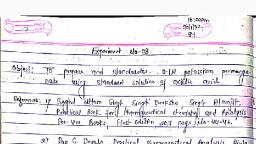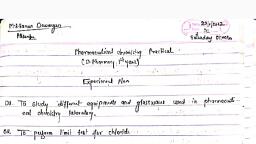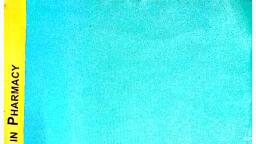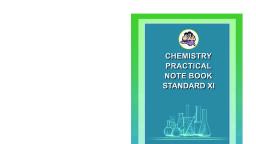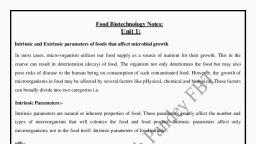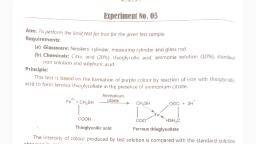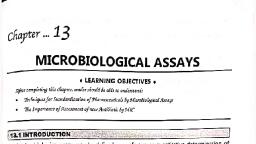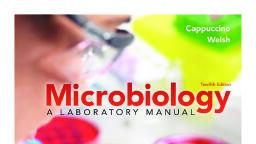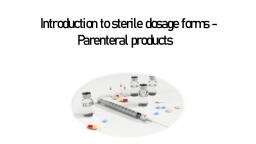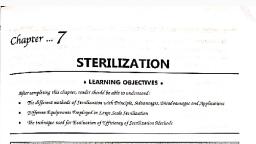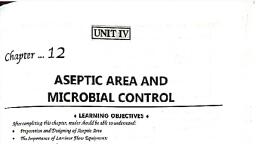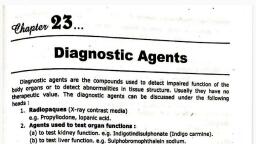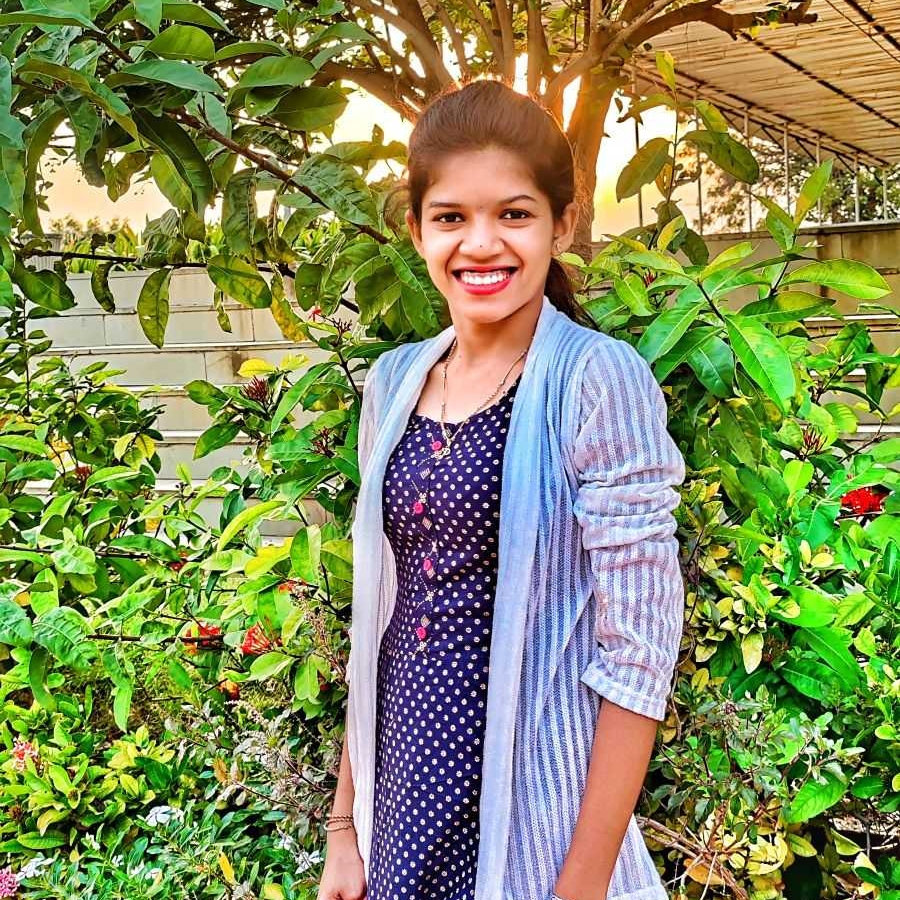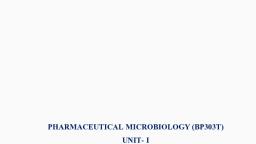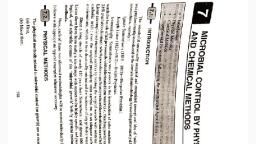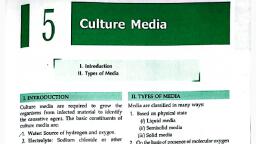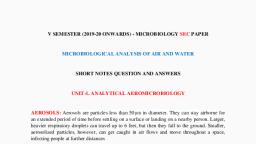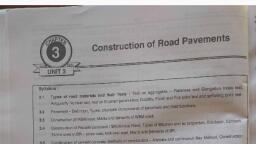Page 1 :
Chapter ... tt, , STERILITY TESTING, , ¢ LEARNING OBJECTIVES ¢, After completing this chapter, reader should 6e able to understand:, , © ‘The Sterifity testing of Pharmaceutical products with Methods, Sample size, Media used as well as, interpretation of results, , , , , , , , , , , , , ‘44:7 INTRODUCTION © eee, , The tests for sterility are intended for detecting the presence of viable forms of, microorganisms in pharmaceutical preparations. A number of products are necessary to be, sterilized such as ophthalmic preparations, injections, infusions, implants, syringes,, bandages, dressings, needles, surgical instruments etc, and must be checked for the, contamination of microorganisms (bacteria and fungi). The test must be carried out in an, aseptic area to avoid accidental contamination of the product during the test. The working, area in which the test is performed should be monitored regularly by sampling the air and, surface of the working area., , , , , , , , ‘44.2 TEST. FOR STERILITY., , The test for sterility is based upon the principle that if microorganisms are placed in a, , medium which provides nutritive material and water and kept at a favourable temperature,, , the microorganisms will grow and their presence can be indicated by turbidity in the, originally clear medium., , The probability of detecting viable microorganisms in the tests for sterility, increases, with the number present in the given amount of preparations being examined and, according to the species of microorganisms present. Table 11.1 gives guidance on the, minimum number of items recommended to be tested in relation to the number of items in, the batch (as per LP.)., , The external surface of ampoules and closures of vials and bottles should be cleaned, with a suitable antimicrobial agent. If the contents are packed in a container under vacuum,, sterile air should be admitted by using suitable sterile device., , The external surface of ampoules and closures of vials and bottles should be cleaned, with a suitable antimicrobial agent. If the contents are packed in a container under vacuum,, sterile air should be admitted by using suitable sterile device., , (11), , , , , , , , , , eS
Page 2 :
Pharmaceutical Microblology (8.Pharm. Sem. I), , 11.2, , Sterility Testing, , Table 11.1: Number of items recommended to be tested in the batch (as per I.P.), , , , , , , , No.| Preparations | Number of containers in the | Minimum number of containers, batch are recommended to be tested, 1. | Parenteral Not more than 100 containers | 10% or 4 containers (whichever is, Preparations greater), More than 100 but not more | 10 containers, than 500 containers, More than 500 containers 2% or 20 containers (whichever is, less), For large-volume parenterals | 2% or 10 containers (whichever is, less or specified), 2. | Ophthalmic and | Not more than 200 containers | 5% or 2 containers (whichever is, other non- greater), Parenteral 7 ., preparations More than 200 containers 10 containers, 3. | Surgical Catgut, surgical sutures and|2% or 5 Packages (whichever is, dressings and| other sterile medical devices | greater, maximum 20 Packages), devices for use, Not more than 100 Packages 10% or 4 packages (whichever is, greater), More than 100 but not more| 10 packages, than 500 packages, More than S00 packages 2% or 20 pa ckages (whichever is, less), 4. | Bulk solids Upto 4 containers Each container, More than 4 containers but] 20% or 4 containers (whichever is, not more than 50 containers greater), More than S0 containers 2% or 10 containers (whichever is, greater), Culture Media:, , , , , , , , , , , , , , The following media are used for tests of, sterility test is given in Table 11.2,, , 1. Fluid thioglycollate medium (FTM, primarily intended for the culture of, aerobic bacteria. If more than the u, pink colour, the medium may be re:, , Sterility. The composition of media used for, , ): It is used with clear fluid products, FTM is, anaerobic bacteria; however it will also detect, Pper one-third of the medium has acquired a, stored once by reheating in a water bath or in
Page 3 :
pharmaceutical Microbiology (B.Pharm. Sem. Im) 11,3 Sterility Testing, , free flowing steam until the pink colour disappears and cooling rapidly, taking care, to prevent the introduction of non-sterile air into the container, When ready for use,, not more than the upper one-tenth of the medium should have a pink colour., , 2. Alternative thioglycollate medium (ATM): It is used with turbid or viscid products, , and for devices having tubes with small lumina. ATM is incubated in such way that,, to assure anaerobic conditions., , , , 3, Soyabean casein digest medium (SCDM): SCDM is suitable for the culture of both, fungi and aerobic bacteria., , Medium 1 and 2 are adjusted to pH 7.1 + 0.2, medium 3 is adjusted to pH 7.3 + 0.2 and, , sterilized by autoclaving at 121°C for 20 minutes. Anaerobic conditions are required for, growth of some microbial species (Table 11,3)., , Table 11.2: Composition of media used for sterility test, , , , , , , , , , , , , , , , Components FIM AT SCDM, L-qystine 0.5 gm 0.5 gm Sodium chloride 2.59m 2.5gm 5.0 gm, Dextrose monohydrate/anhydrous 5.5 gm/5.0 gm } 5.5 gm/5.0 gm | 2.5 gm/2.3 gm, Yeast extract (water soluble) 5.0gm 5.0gm Pancreatic digest of casein 15.0 gm 15.0 gm 17.0 gm, Sodium thioglycollate / thioglycollic | 0.5 gm/0.3 ml | 0.5 gm/0.3 ml acid, Papaic digest of soybean meal ; = 3.0 gm, Dipotassium hydrogen phosphate = = 2.5 gm, Resazurin sodium soluble (0.1%) 1.0 ml = Distilled water to make 1000 ml 1000 ml 1000 mi, PH of the medium (After sterilization) | 7.1 +02 7140.2 7.3402, , , , , , Sultabllity of Media:, The media used for sterility test should comply the following tests., Sterility of media: Incubate portions of the fluid thioglycollate medium/alternate, , thioglycollate medium at 30 to 35°C and soyabean casein digest medium at 20 to 25°C for, Not less than 14 days and observe the presence of the growth of microorganisms in a sterile, Media,
Page 4 :
Pharmaceutical Microbiology (B.Pharm. Sem. tH 114 Sterility Testing, , Growth promotion test: Test each autoclaved load of media for its growth promoting, Qualities by separately inoculating duplicate test containers of each medium with about, 100 viable microorganisms of each of the strains listed in Table 11.3. The test media are, satisfactory if clear evidence of growth appears in all inoculated media containers within, specified time. The sterility test is considered invalid if the test medium shows inadequate, , , , , , , , , , , , , , growth response., Table 11.3: Test microorganisms for growth promotion test of media, Medium Test Incubation, microorganisms Temperat- | Duration | Conditiure (C) (days) ons, Fluid thioglycollate | 1. Clostridium sporogenes 30 to 35 3 Anaerobic, 2. Staphylococcus aureus 30 to 35 3 Aerobic, 3. Pseudomonas aeruginosa 30 to 35 3 Aerobic, Alternative 1. Bacteroides vulgatus 30 to 35 3 Anaerobic, thioglycollate 2. Clostridium sporogenes 30 to 35 Anaerobic, 3. Bacillus subtilis 30 to 35 3 Aerobic, Soyabean-casein |1. Aspergittus brasitiensis 20 to 25 Aerobic, digest 2. Candida albicans 20 to 25 Aerobic, 3__Bacitlus subtilis 30 to 35 Aerobic, , , , , , , , , , , , Test for Bacteriostatis and Funglstasis (test for sample to be tested as per IP 1996):, Prepare cultures of bacteria and fungi from the strain of microorganisms mentioned in, Table 11.3. Inoculate the sterility test media with about 100 viable, volumes of media listed in Table 11.4. Add the specific portion of, examined to half of a suitable number of the containers already co, , Microorganisms using, the preparation being, , Ntaining the inoculum, and culture medium, Incubate the containers at the @pPropriate temperatures and under the, , conditions listed in Table 11.3 for not less than 7 days., , If growth of the test microorganisms in the Preparation-medium mixture is visually, comparable to that in the control vessels, use some amount of the Preparation and medium, regularly specified in Table 11.4. If the test preparation is bacteriostatic and/or fungistatic, when tested as described above, use a suitable sterile neutralizing agent (Table 11.5)., , ——, , ae Ek, , f, , T—- Zz hoe hr, , ree er er er ee ee”
Page 5 :
pharmaceutical Microbiology (8.Pharm. Sem.) 11.5 Sterllity Testing,, , Table 11.4: Quantity of test sample and medium for tests of bacteriostasis and, fungistatis and for test of sterility, , , , , , , , , , , , , , , , , , , , , , , , , , Prepa- Content Minimum quantity of Minimum, ration product volume of, culture medium, (ml), liquids | Less than 1 ml - Total contents of container 15, 1 ml or more but fess than S mi Half the contents of a, container 20, 5 ml or more but less than 20 ml 2ml 20, 20 ml or more but less than 50 ml Sm 40, 50 ml or more but less than 100 ml 10 ml 80, Solids Less than S50 mg Total contents of container 40, 50 mg or more but less than 200 mg Half the contents of a 80, container, 200 mg or more 100 mg 80, Table 11.5: Inactivation of antimicrobial agents in sterility testing, Antimicrobial agent Method of inactivation/inactivating agent, Penicillin Penicillinase, Cephalosporins Cephalosporinase, Streptomycin Streptomycin adenyltransferase/, Streptomycin phosphotransferase, Aminoglycosides Acetyl-coenzyme ‘A’, Barbiturates Dilute to 0.2% in culture medium with a pH 7.0, Sulfonamides p-aminobenzoic acid, Chloramphenicol Acetyl transferase, Phenolic disinfectants Dilution, Halogens Sodium thiosulphate, Quaternary ammonium compounds | Lecithin + Lubrol or Tween 80, Dyes Membrane filtration, Heavy metals Thioglycollic acid, Ethyl alcohol Dilute to less than 1%, Other antibiotics Membrane filtration

